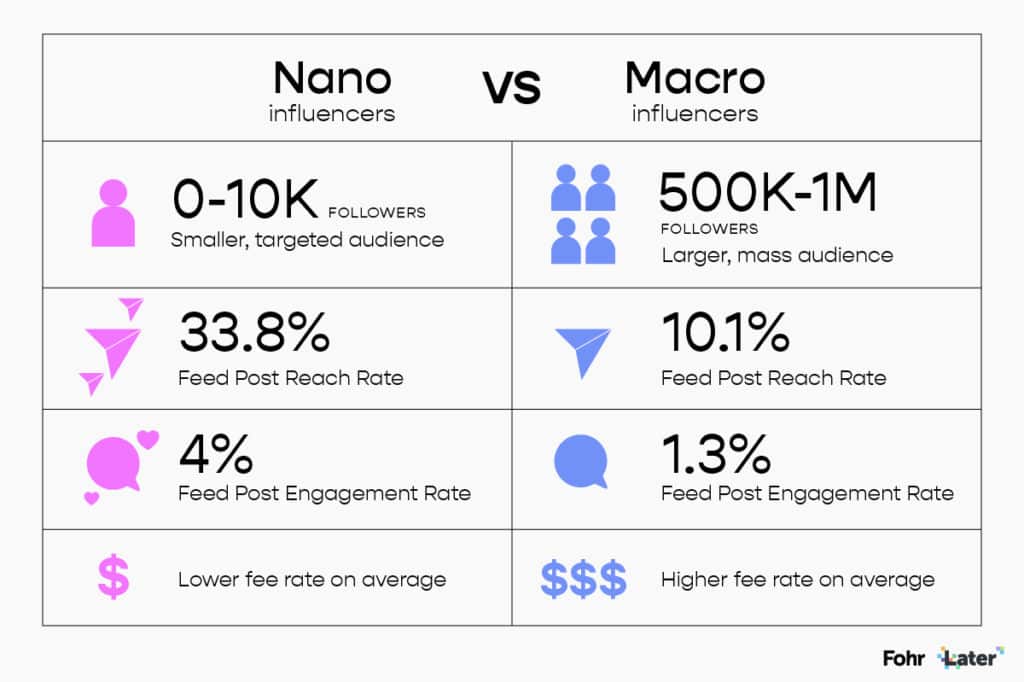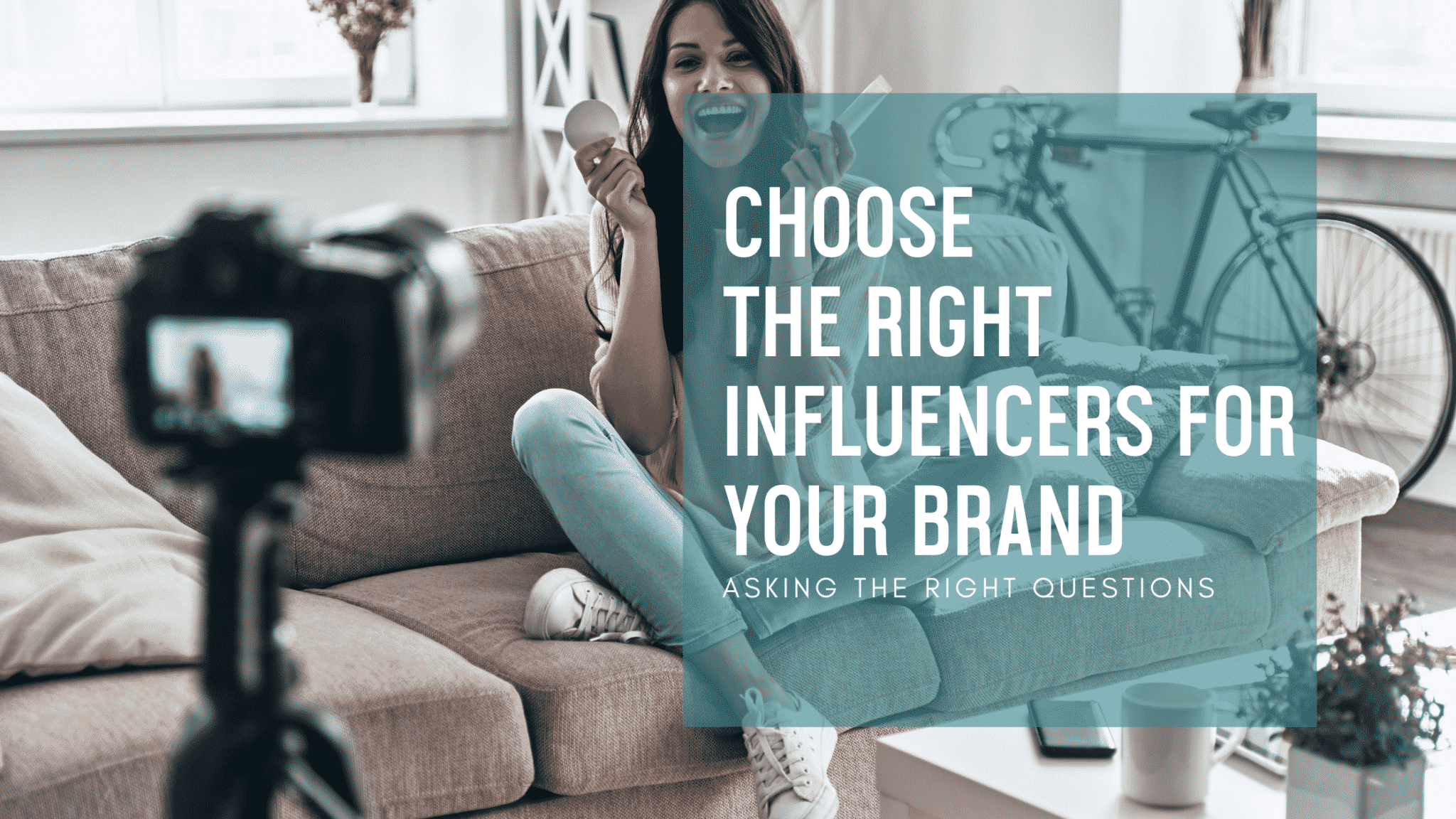How do you go about finding the right influencers on social media? If you’ve been doing any sort of marketing over the last 5 years, you’ve probably been told that you need to have an influencer marketing strategy. (You should.) From exaggerated sales claims to the onslaught of outreach to your inbox, it’s difficult to know what to believe. It’s important to remember that influencer marketing should be PART of your overall digital marketing strategy but (almost) never your long-term solution.
An influencer strategy is great but often incomplete though when it comes to taking advantage of the opportunities that come to you organically over the course of the year. When it comes time to evaluate your next prospective collaboration, I’d advise asking yourself and your team these questions.
Are they a fit for WHO my brand is?
The first thing that you should ask yourself isn’t how many followers that the influencer has. It’s about whether or not they fit with who your brand is. I have often said that a branding exercise all companies should go through is imagining what types of people your brand would go out with if they were to go out on the town. If this influencer doesn’t fit in your friend group, it might be time for you to pass.
If they have a ton of followers but a propensity to drop racial slurs for attention, they’re probably not going to mesh well with your respectively #woke customer. In fact, their size could have the exact opposite effect.
Ask them for a breakdown of their followers. It’s also important that their community is full of people with whom your brand would connect as well.
What kind of engagement do they get?
Here is an insider tip. Don’t take engagement numbers at face value. Numbers are often inflated through a number of practices. If you haven’t heard of Instagram pods, you’re probably curious how so many people with 10K followers average 200 comments per post. They’re in an engagement circle that boosts each other’s figures so that they can enhance their numbers and negotiate more effectively with brands.
Don’t take the engagement numbers at face value!
Take your time to go through 5-10 posts that they’ve done for brands. If you’re seeing the same names/profiles and none of them are commenting about the product itself, you’re dealing with some fake figures.
Devil’s Advocate: Fake numbers can lead to legitimate numbers when they use them to boost their Discovery. Don’t discount people who have some consistent commenters either.
Is their content good for repurposing?
Could you use their content in your future marketing efforts? One of the main reasons that I work with influencers isn’t just to boost our reach but to get content that I can use in the future. (This is why apps like Trend.io are pretty great to use as part of your strategy.)
You need content that you can use. If you’re looking to break into a new market, look at influencers who look like your target market. For instance, we run campaigns for The 365 Program. It is a training application for intermediate to advanced individuals. It is suitable for both men and women but, I’m not going to use a ripped-out 33-years old man to market to potential female customers who might be following a HIIT training app but looking for a different option. I’m going to take one of our many great female members’ posts to reach them.
If you’re looking at a potential influencer, make sure that they make solid content that you can use to market in the future. This is also a good reason not to commission many collaborations that are dependent on the year that you’re in unless it is going to be an ongoing relationship.
What is their community/engagement like?
As a rule, the larger the profile, the lower the engagement rate. That’s almost always true. It doesn’t mean that large influencers are bad or that small communities are good. They each have their place in a marketing campaign. It’s important though to make sure that you manage your expectations and KPIs of a collaboration based on what their community might actually do.
Below are some figures that you can use as benchmarks from Later. We use their service for most of our Instagram clients and their research is pretty strong. As you can see here, there is a 10% Reach Rate and 1.3% Engagement Rate on large profiles. If your potential partner is falling well outside of these figures, it might be time to ask why.

Will they get you canceled?
See my above statement about casually dropping racial slurs. Sometimes, the same thing that helps an influencer rise to prominence is the same thing that could cause their downfall. Be wary of lightning rods as they can get you burned.
This is really just a reinforcement of the first question. Anybody with a message will ‘trigger’ somebody but, each brand has to decide to what extent they’re willing to ride-or-die with an influencer. Choose your partnerships and their depths wisely.
At Phrasing, we’re not here to fall into cancel culture and I’ll probably write a whole different article about marketing and the perception of canceling. You shouldn’t fear working with people that take a position but, be ready for it to be a position you’d feel comfortable defending.
Are they willing to drive sales?
Notice that the question wasn’t about whether they will drive sales. You often can’t know this before you work together on your first collaboration. Even then, sales through influencer collaborations aren’t always easily attributable.
When it comes to their willingness to drive sales, this is where I would say that you should absolutely have a talk with any potential collaborator. If you don’t have an affiliate network, get on that ASAP. Giving a collaborator skin in the game is the best way to make sure that they’ll put their best foot forward AND try to actually drive traffic. Furthermore, it often means that your new content won’t be temporary on their page. Think of affiliate fees as advertising fees already paid. If you have a 10% discount and 10% commission, that’s just under 20%. You’ll take that ratio on most consumer packaged goods.
I hope that you found these helpful and it makes you a bit more strategic when choosing your partnerships.

